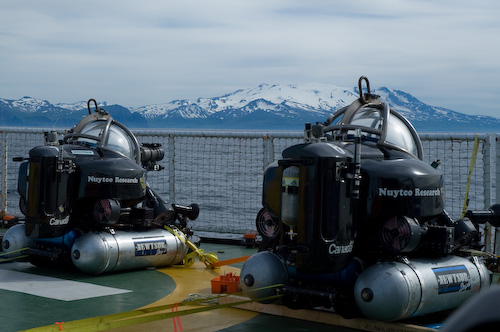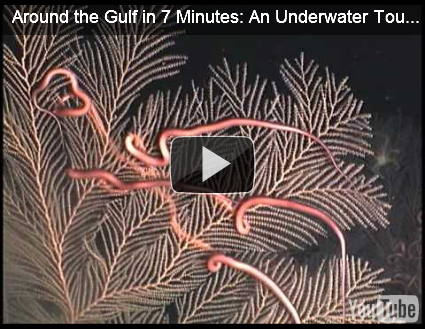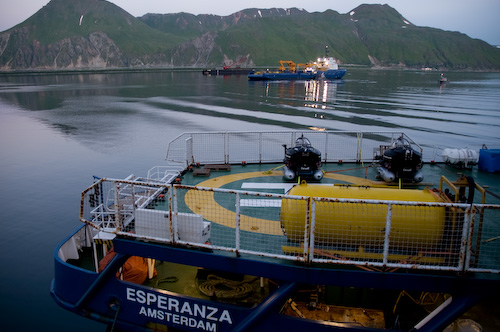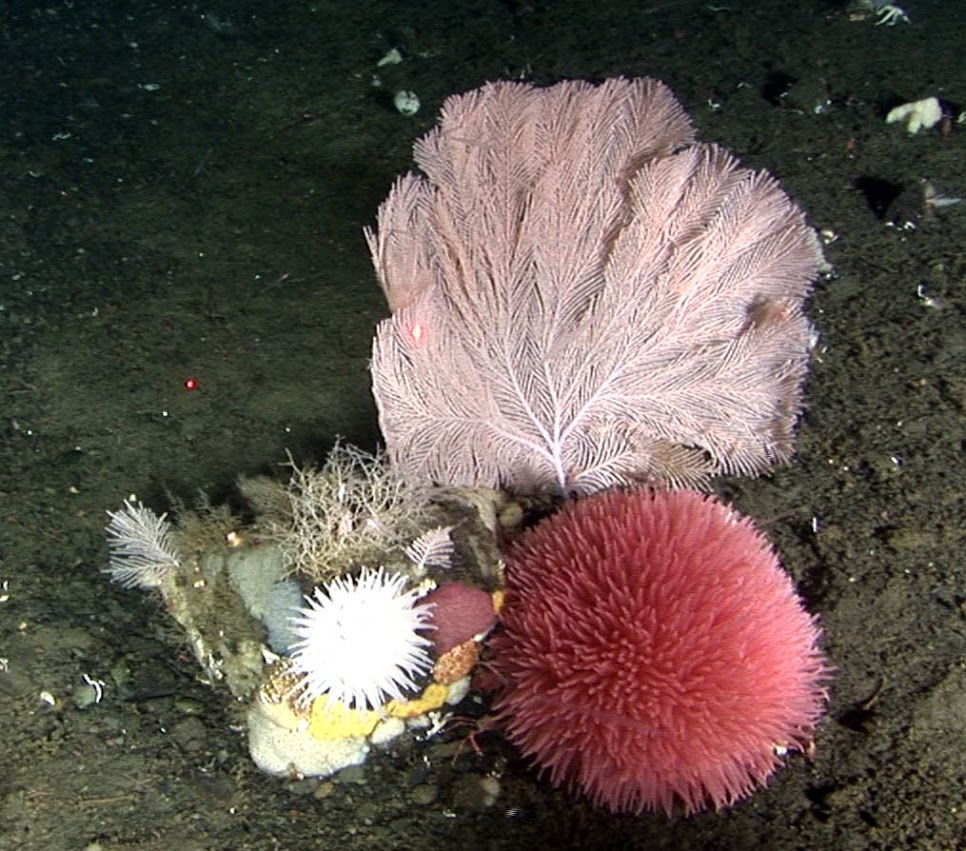Esperanza Sets Sail from Dutch Harbor: Bering Sea Expedition Under Way

DeepWorker submarines aboard Esperanza as the ship heads north into the Bering Sea, leaving the Aleutians behind. (Photo by David E. Guggenheim)
The Expedition to the Bering Sea officially got under way as the M/V Esperanza departed Dutch Harbor, Alaska on Friday, July 27 at 4pm Alaska Daylight Time. The Esperanza will steam through the night — for roughly 15 hours — to its first destination, Pribolof Canyon near the Pribolof Islands in the Bering Sea. The first DeepWorker dives are scheduled for Saturday morning.
In June, an international team of researchers and conservation specialists recently completed a week of intensive training and preparations for this Greenpeace-led expedition to Alaska’s Bering sea. The Esperanza is carrying two manned submersibles, a remotely-operated vehicle (ROV) and the research team to the Bering Sea for a three week survey of Zhemchug and Pribilof Canyons, specifically to map and document deepwater corals living at depths of more than 1,000 feet.

Captain Peter Wilcox gently maneuvers M/V Esperanza away from her berth in Dutch Harbor, Alaska, kicking off the Bering Sea Expedition. (Photo by David E. Guggenheim)
These corals, some nearly two thousand years old, are vital components of the Bering Sea’s rich and unique ecosystem. Unfortunately, these corals are at great risk, ending up in fish trawling nets as “bycatch” or “incidental take,” the unintentional harvest of one species while fishing for another. Many tons of corals have been destroyed by indiscriminant trawling gear which scrapes the bottom and sides of seamounts — underwater mountains — for fish.
It is hoped that the data collected during this expedition will help advance our scientific understanding of these deepwater coral communities and be helpful to policy makers as well, leading to more effective conservation measures. A Scientific Advisory Panel is advising the project, including representatives from Scripps, the Smithsonian, the St. George Island Ecosystem Office, MCBI, Oceana, Texas A&M, and Nova Southeastern. 1planet1ocean president David E. Guggenheim will be serving as a sub pilot and scientific advisor.
The expedition will be using two DeepWorker submarines, one-person mini-subs, untethered, that are capable of a depth of up to 2,000 feet. Each sub is equipped with a high-definition video camera, a manipulator arm for collecting samples, sonar for navigation and is always in contact with the surface using through-water (acoustic) communications.
DeepWorker’s cabin recirculates the air, using carbon dioxide scrubbers similar to what’s used in spacecraft, providing up to 80 hours of life support. A typical dive lasts 4-6 hours.
 |








Leave a Reply
Want to join the discussion?Feel free to contribute!